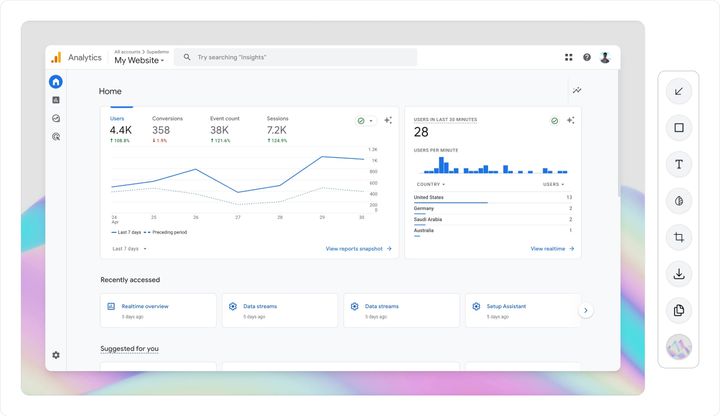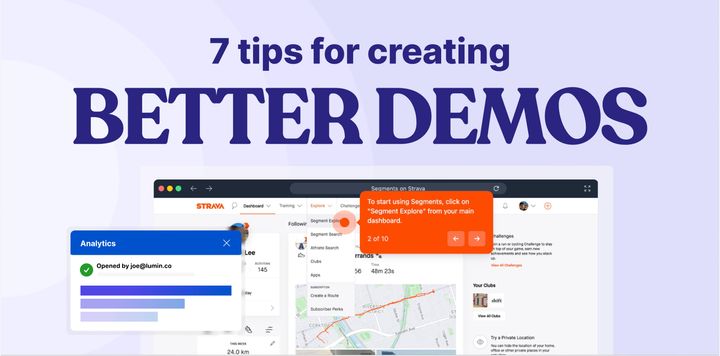In the contemporary business landscape, the significance of customer success cannot be overstated. It's the new frontier that businesses are exploring to foster stronger relationships with their clients. However, navigating this terrain requires a robust compass - customer success metrics.
These metrics serve as your unbiased eyes and ears, providing you with a clear picture of your customer's perceptions and the efficacy of your strategies. They enable you to gauge customer satisfaction, identify areas needing improvement, and assess the performance of your customer success team. Ultimately, these metrics act as a roadmap to enhanced customer experiences, fortified relationships, and a flourishing business.
Why is Customer Success Metrics Important?
Customer success metrics are quantifiable values that reflect the efficiency and effectiveness of a company's customer success strategies. They offer objective insights into customer behavior, customer success manager (CSM) activity, and overall business outcomes. By monitoring these metrics, businesses can refine their customer success efforts, leading to increased customer satisfaction, reduced churn, and expanded revenue.
The importance of these metrics is underscored by compelling statistics. For instance, a PwC study revealed that 17% of U.S. customers would abandon a business after just one bad experience. Additionally, Recurly's analysis of 1,900 subscription services in 2021 and 2022 disclosed an average customer churn rate of 5.6%.
Understanding Different Types of Customer Success Metrics
Customer success metrics can be broadly categorized into three groups: customer behavior metrics, CSM activity metrics, and business outcome metrics.
1. Customer Behavior Metrics
These metrics measure customer engagement with a product or service. They provide invaluable data about customer behavior.
a. Net Promoter Score (NPS)
NPS measures customers' willingness to recommend a company’s products or services to others. It's a strong indicator of customer satisfaction, loyalty, and advocacy.
b. Customer Health Score
This metric aggregates various customer-level data to provide an overall view of customer satisfaction or 'health'. It helps predict churn, identify at-risk customers, and understand which customers are ready for upselling or cross-selling.
c. Customer Effort Score (CES)
CES determines the amount of effort a customer has to exert to get an issue resolved, a request fulfilled, a product purchased/returned, or a question answered.
d. Customer Onboarding Success
This metric measures how successful a company is at getting new customers to a fully operational state with their product.
e. Qualitative Customer Feedback
Qualitative feedback can provide in-depth insights about customer needs, wants, and perceptions. It can highlight problems in your product or service that may not be apparent through quantitative metrics.
f. Usage Metrics
Usage metrics provide insights into how customers are using your product or service. This could include things like feature usage, login frequency, session duration, etc.
2. CSM Activity Metrics
These metrics track the actions of your customer success managers. By measuring these, companies can understand how the activities of their CSMs affect customer sentiment and retention.
a. Frequency of Interactions
This metric measures how often your customer success managers are interacting with your customers.
b. Support Ticket Volume
A high volume of support tickets can indicate problems with your product or service that need to be addressed.
c. First Contact Resolution Rate (FCRR)
FCRR is the percentage of customer issues that are resolved in the first interaction with a customer service representative.
d. Risk Identification and Mitigation
This is a measure of how effectively a company can identify and mitigate risks that may lead to customer dissatisfaction or churn.
3. Business Outcome Metrics
These metrics provide insights into the direct impact of customer success efforts on the business’s bottom line.
a. Monthly Recurring Revenue (MRR)
MRR is the amount of revenue that a company can reliably anticipate every 30 days.
b. Customer Lifetime Value (CLTV)
CLTV is a prediction of the net profit from the entire future relationship with a customer.
c. Retention Rate
Retention rate is a customer success metric that represents the percentage of customers a company has retained over a specific time period.
d. Customer Retention Cost (CRC)
CRC is the amount of money a company spends on activities and programs to reduce customer churn and retain customers.
e. Customer Satisfaction Score (CSAT)
CSAT is a metric that measures a customer's satisfaction with a product, service, or support interaction.
f. Churn Rate
Churn measures the rate at which customers cease their subscriptions or stop doing business with you over a given period.
g. Expansion or Upsell Rate
This metric measures the increase in revenue from existing customers through upselling (selling more of the same product) or cross-selling (selling different products to the same customer).
Using Customer Success Metrics for Enhanced Business Outcomes
By meticulously monitoring and analyzing these metrics, businesses can glean valuable insights about their customer success strategies and initiatives. They can identify successful strategies and areas needing improvement. Moreover, they can leverage these metrics to make data-driven decisions, designing and implementing strategies that maximize customer satisfaction and retention.
For instance, if your metrics reveal high churn rates, this may indicate dissatisfaction with your product or service, necessitating improvements or changes. Similarly, if CSM activities are not translating into improved customer engagement or satisfaction, it may be time to reevaluate your customer success processes or provide additional training for your team.
Furthermore, businesses can leverage customer success metrics to predict and forecast future outcomes. For instance, analyzing trends in customer behavior and business outcome metrics can provide an estimation of future retention rates, churn, or revenue growth.
Utilizing Customer Success Software
Many of the metrics mentioned can be automatically calculated and tracked using customer success software. This software provides a comprehensive view of the customer's journey and behaviours, enabling you to measure, analyze, and manage customer health. They often come equipped with features that can predict customer churn, measure customer health scores, and even automate communication with customers based on their behaviours or milestones.
Software like Gainsight, ChurnZero, or ClientSuccess can offer robust functionalities that cater to different aspects of customer success management. These platforms provide tools for tracking customer behavior, automated communication, advanced analytics, and more.
Wrapping Up
Understanding and measuring customer success metrics is critical for any business that wants to grow and retain its customers. But manually tracking these metrics can be time-consuming and error-prone. This is where customer success and knowledge base software can be a game-changer, providing the tools needed to manage customer relationships effectively and proactively.
Customer success metrics are powerful tools in your arsenal. By tapping into the insights they provide, you can create a customer success strategy that not only drives customer satisfaction but also fuels business growth.





